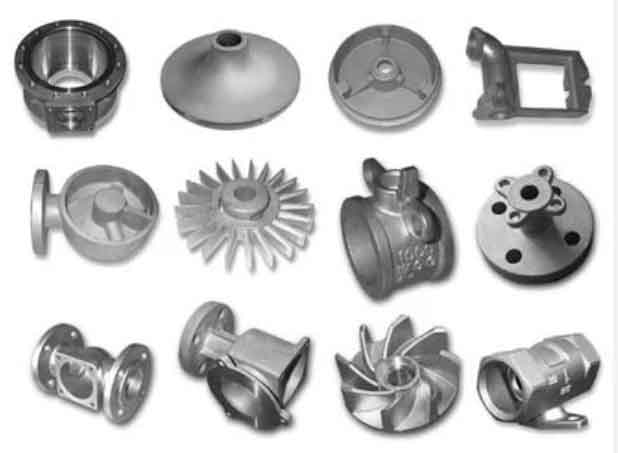Ductile iron casting is a process used to create durable components from molten metal. It involves transforming molten iron into a ductile form by adding certain alloying elements. The resulting ductile iron has enhanced mechanical properties, such as high tensile strength, toughness, and wear resistance. Here’s an overview of the process:

- Pattern Creation: The process begins with the creation of a pattern, which is a replica of the desired component. The pattern is typically made from wood, plastic, or metal and is used to create the mold.
- Mold Preparation: The pattern is placed in a flask, and molding sand is packed around it. The sand is a mixture of silica, clay, and other additives that provide strength and cohesion. The mold is typically made in two halves, called the cope and drag.
- Mold Assembly: After the sand has been packed around the pattern, the cope and drag are brought together to create a complete mold cavity. Channels called gates and risers are also included in the mold to facilitate the flow of molten metal and provide a reservoir for excess material.
- Pattern Removal: Once the mold is assembled, the pattern is removed by either pulling it out or by splitting the mold. This leaves behind a cavity in the shape of the desired component.
- Molten Metal Preparation: Ductile iron is created by adding small amounts of magnesium or cerium to molten iron. These alloying elements promote the formation of graphite nodules within the iron matrix, giving it its characteristic ductility.
- Pouring: The prepared molten metal is poured into the mold cavity through the gating system. The metal fills the cavity, taking the shape of the component.
- Solidification: As the molten metal cools, it solidifies and takes on the shape of the mold. The solidification process is carefully controlled to ensure the formation of the desired microstructure and mechanical properties.
- Shakeout and Cleaning: Once the metal has solidified, the mold is removed by breaking it apart. The component, still attached to the gating system, is separated from the excess sand and cleaned.
- Finishing: The component is then subjected to various finishing processes, including grinding, machining, and heat treatment, to achieve the desired dimensions, surface finish, and mechanical properties.
- Inspection and Testing: The finished components undergo rigorous inspection and testing to ensure they meet the required specifications. This may include dimensional checks, visual inspection, non-destructive testing, and mechanical testing.
Ductile iron casting is a versatile and cost-effective method for producing a wide range of components used in various industries, including automotive, construction, machinery, and agriculture. The process offers excellent strength and durability while maintaining relatively good machinability compared to other cast iron types.
